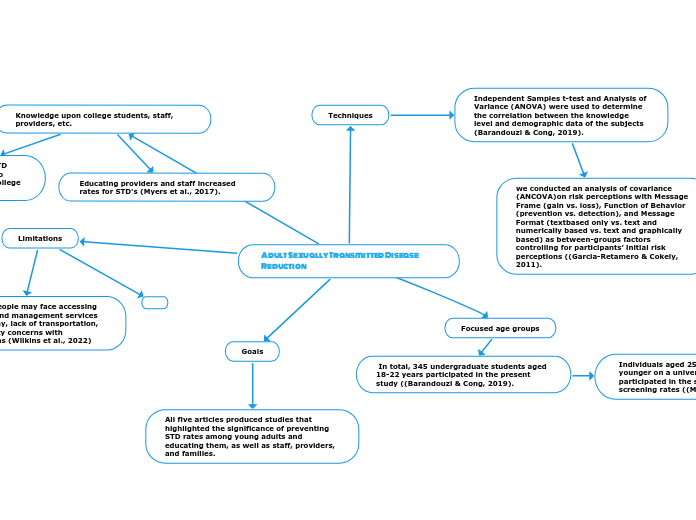Adult Sexually Transmitted Disease Reduction
Knowledge upon college students, staff, providers, etc.
Study revealed lack of knowledge of STD knowledge in young adults. Essential to implement educational programs for college students (Barandouzi & Cong, 2019).
Educating providers and staff increased rates for STD's (Myers et al., 2017).
Limitations
Barriers young people may face accessing STD prevention and management services are inability to pay, lack of transportation, and confidentiality concerns with parents/guardians (Wilkins et al., 2022)
Goals
All five articles produced studies that highlighted the significance of preventing STD rates among young adults and educating them, as well as staff, providers, and families.
Techniques
Independent Samples t-test and Analysis of Variance (ANOVA) were used to determine the correlation between the knowledge level and demographic data of the subjects (Barandouzi & Cong, 2019).
we conducted an analysis of covariance (ANCOVA)on risk perceptions with Message Frame (gain vs. loss), Function of Behavior (prevention vs. detection), and Message Format (textbased only vs. text and numerically based vs. text and graphically based) as between-groups factors controlling for participants’ initial risk perceptions ((Garcia-Retamero & Cokely, 2011).
Focused age groups
In total, 345 undergraduate students aged 18-22 years participated in the present study ((Barandouzi & Cong, 2019).
Individuals aged 25 years of age and younger on a university campus participated in the study to increase screening rates ((Myers et al., 2017).
